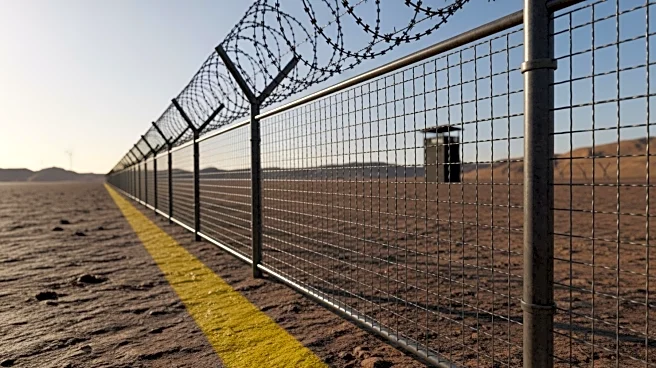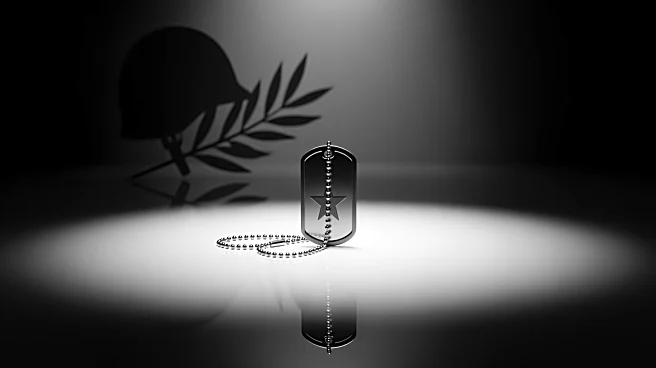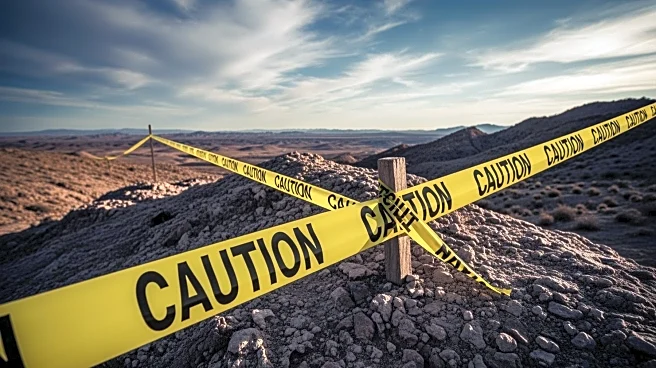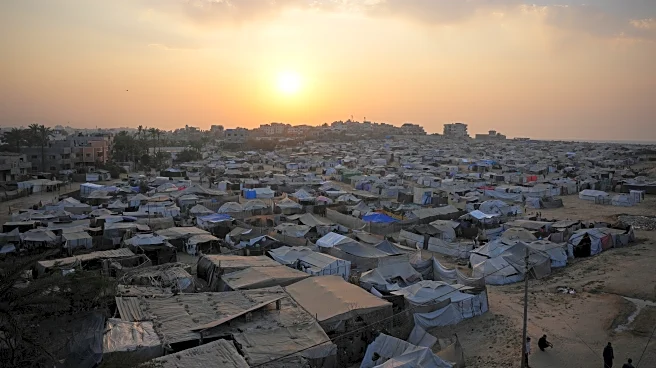What's Happening?
Israeli Defense Forces (IDF) are maintaining a presence at an outpost near Gaza's 'yellow line,' a temporary boundary established under a ceasefire agreement. The line has become a point of contention,
with accusations of Israeli forces firing on Palestinians near the border. The ceasefire, brokered with U.S. involvement, aims to stabilize the region, but both sides have accused each other of violations. The situation remains tense as efforts to recover hostages and establish an International Stabilization Force continue.
Why It's Important?
The 'yellow line' represents a fragile peace in a historically volatile region. The ongoing tensions highlight the challenges of implementing ceasefire agreements and the complexities of Israeli-Palestinian relations. The situation affects regional security and has broader implications for international diplomacy, particularly U.S. involvement in Middle Eastern peace processes. The humanitarian impact on Gaza's civilian population remains a critical concern.
What's Next?
The establishment of an International Stabilization Force is planned, pending U.N. approval. This force aims to facilitate Israeli withdrawal and ensure compliance with the ceasefire. Continued diplomatic efforts are necessary to address violations and support humanitarian needs. The situation may influence future U.S. foreign policy and international peacekeeping strategies.
Beyond the Headlines
The conflict raises ethical questions about military engagement and civilian protection. It highlights the need for sustainable peace solutions and the role of international organizations in conflict resolution. The situation may impact public opinion on foreign policy and humanitarian aid.












